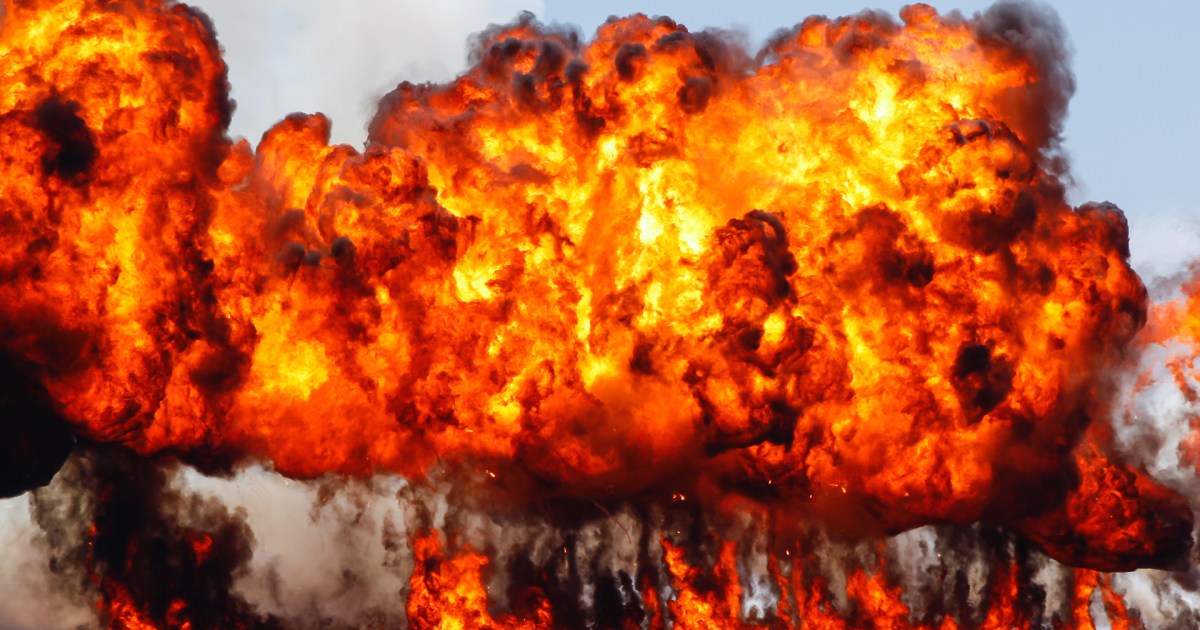Despite what the French authorities have been repeating in terms of denials and denials that their army used napalm bombs against the Algerian revolutionaries during the war of independence, the testimonies abound today to remind the sheer scale of that terrible violence.
This is what she explained in an article on the French website "Orient 21", the historian Raphael Branch, who specializes in exposing issues of violence during the colonial era and is a professor of contemporary history at the University of Paris Nanterre.
Branch conveys - at the beginning of her article - what she described as the slander of the French Minister in charge of Algerian affairs, Robert Lacoste in 1957, that "napalm is strictly prohibited and has never been used in any military operation in Algeria."
As well as the assertion of the French Ministry of Defense at the time that "strict instructions from the French high military command in Algeria prohibit the use of this product."
The historian commented that the French authorities kept repeating this under the Fifth Republic.
Branch adds that France cannot recognize the use of this gel, which is used in the manufacture of incendiary bombs, because this weapon is prohibited by international agreements signed by Paris, and its use contradicts what France is trying to promote that what it is doing is law enforcement operations. Simple in French Algeria since November 1954.
The writer highlighted that what Paris is trying to conceal was evident in the Algerian mountains, where the French army is fighting the fighters of the Algerian National Liberation Army, and where it targets them, especially in the forests that they make their hideouts, so napalm bombs are dropped on them from the air that cause a fast-spreading fire, Especially in areas with dense trees.
French testimonies confirmed what the revolutionaries denounced at a time when Algeria was sinking more and more into the furnace of war.
And the historian reported that the director of the newspaper "Le Monde", Hubert Bovey Merry, said in 1959 that he no longer had the slightest doubt that Paris used these weapons, after an interview with Paul Delauvrier, who succeeded Robert Lacoste as Minister of Algeria in the French government.
A corporal in the French army had sent a letter to the newspaper shortly before that interview in which he described how they had killed a group of Algerian gunmen, saying that they had managed to burn them alive, along with 10 civilians who were with them, including two women and a ten-year-old girl.
The historian stressed that the pilots know very well what they are dropping, as well as the soldiers on the ground who ask for their support, pointing out that the French army used to talk about these weapons the coded phrase: "special cans."
Qaid: I saw the injured trying to escape, a foul smell was spreading around the place, they were rolling on the ground, and some of their flesh was stuck to the stones, they were screaming, and I still hear that screaming from time to time.
Victims' testimonials
The historian narrates the testimonies of some of those who were affected by these weapons, as Muhammad Qaid (one of the revolutionaries who were targeted by napalm bombing in one of the battles) says: “They bombed us with napalm, and we were faced with a real dilemma: What do we do with the soldier who is burning in front of us, and if we touch him we will burn like him, so we used to urge him from the dirt or or We take a piece of cloth and cover it, though it is very risky because the fire can catch anyone who intervenes, very quickly."
Muhammad Qaid added, describing the scene, "I saw the injured trying to escape, a foul smell was spreading in the place, they were rolling on the ground, and some of their flesh was stuck to the stones, they were screaming, and I still hear that scream from time to time."
The mujahid Maryam Mokhtari accurately described the horror that was spreading on the ground when the air force approached, as everyone was afraid of napalm, which gives war its infernal colours, saying that the plane that fired these weapons was in the distance, causing the earth to be covered with what looks like lava from volcanoes and the fire would start spreading in the forest. You see chickens fleeing with their chicks, as well as dogs, animals, and civilians, women and children;
Everyone runs to escape the fire.
As for those who are caught by the fire, they are roasted, and nothing remains of them except charred deposits, while those who can do that try to stop the expansion of the fire with water and by all available means.
A French officer tries to justify the use of this type of weapon by saying that the Algerian fighters were entrenched in great positions, and they could not be expelled unless their ammunition ran out, and the elimination of one of them meant the French lost 10 soldiers in return.
Here, this officer says, it would be best if the Air Force "strikes the rebels and uses napalm in this rocky area where the insurgents can set up a dangerous and effective ambush."
Despite the enormity of the use of these weapons, France, aware of the political and diplomatic consequences of acknowledging their use, persists in its denial.
And the historian concluded by saying, "After 1962, the charred and petrified forests in the Algerian mountain ranges have been witness to this violence for years. As for the corpses that turned into coal lumps because of these incendiary materials, their images still haunt those who saw them."

